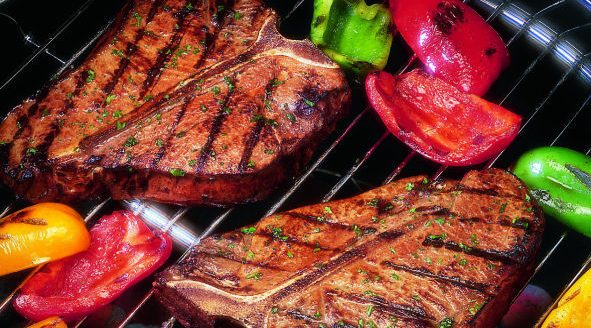Social media: A slice of beef is more than a teaser for the palette, it is economic powerhouse grounded in the High Plains, Dave Bergmeier writes in this week’s column.
With the many activities filling the month of May one is a perfect fit for this region of the country.
May is National Beef Month and is being celebrated throughout High Plains states.
Governors—regardless of party affiliation—will be busy signing proclamations and taking tours of ranches. It comes at a time when that visibility is needed. Many ranchers are facing hardships. Lack of hay and pasture because of drought has led to extended culling of cattle. Higher interest rates drive up management costs. In 2023, no sector in the beef chain has been spared, but good prices have helped.
National Beef Month serves as a reminder of what the sector means to the United States.
According to the U.S. Department of Agriculture’s National Agricultural Statistics Service and listed on the National Cattlemen’s Beef Association statistics list, beef cattle are raised in all 50 states and there are about 883,000 cattle and calf operations.
Beef shines in the High Plains when one looks at the top five in many categories. They include:
• All cattle, No. 1, Texas, 13.1 million; 2, Nebraska, 6.85 million, 3, Kansas, 6.5 million, 4, Oklahoma, 5.3 million. California is fifth at 5.15 million.
• Cows and heifers that have calved, No. 1, Texas, 5.3 million; 2, California, 2.39 million; 3, Oklahoma, 2.23 million; 4, Missouri, 2.16 million 5, Nebraska, 1.96 million.
• Beef cows that have calved, No. 1, Texas, 4.69 million; 2, Oklahoma, 2.19 million; 3, Missouri, 2.04 million; 4, Nebraska, 1.9 million; 5, South Dakota, 1.8 million.
• Calf crop, No. 1, Texas, 4.6 million; 2, Oklahoma, 1.95 million; 3, Missouri, 1.91 million; 4, California, 1.84 million; 5, South Dakota, 1.78 million.
• Cattle on feed, No. 1, Texas, 2.89 million; 2, Nebraska, 2.72 million; 3, Kansas, 2.66 million; 4, Iowa, 1.17 million; Colorado 1.14 million.
No matter where you are driving in the High Plains the beef influence is present and held in high regard. The ripple effect is known and appreciated. In 2022, cattle production was forecasted to represent about 17% of the $462 billion in total cash receipt for agricultural commodities, the USDA’s Economic Research Service noted. In addition to having the world’s largest fed-cattle industry, the U.S. is the world’s largest consumer of beef—primarily high-value, grain-fed beef. It is unique that it has two production sectors—cow-calf producers and cattle feeding.
Farmers and ranchers continue to take the lead in environmental stewardship, taking in forages and converting them into efficient pounds of gain. Memorial Day weekend is, in many circles, the kickoff of the summer grilling season. All of that work through the cattle chain pays off when consumers are enjoying a steak or hamburger hot off the grill.
As we think about the many other events that occur in May, including Mother’s Day on May 14, high school and college graduations, and family reunions, beef has oftentimes been at the center of table. We would not want it any other way.
Dave Bergmeier can be reached at 620-227-1822 or [email protected].


